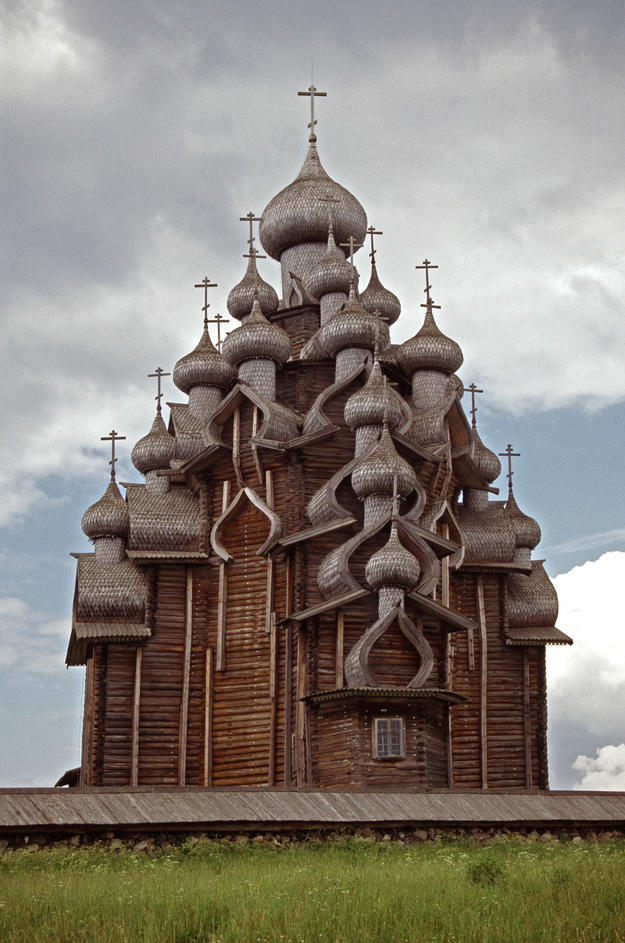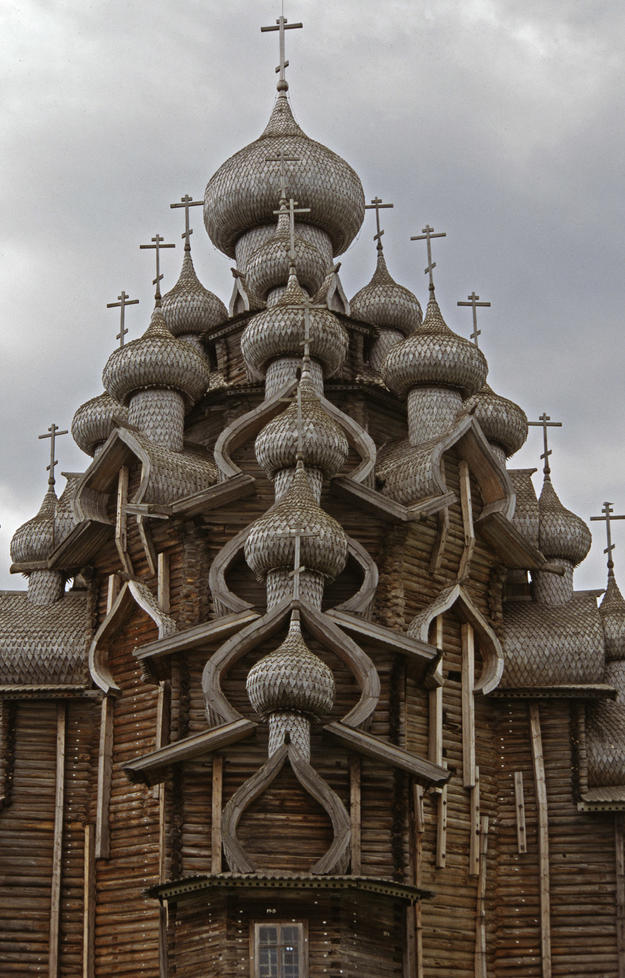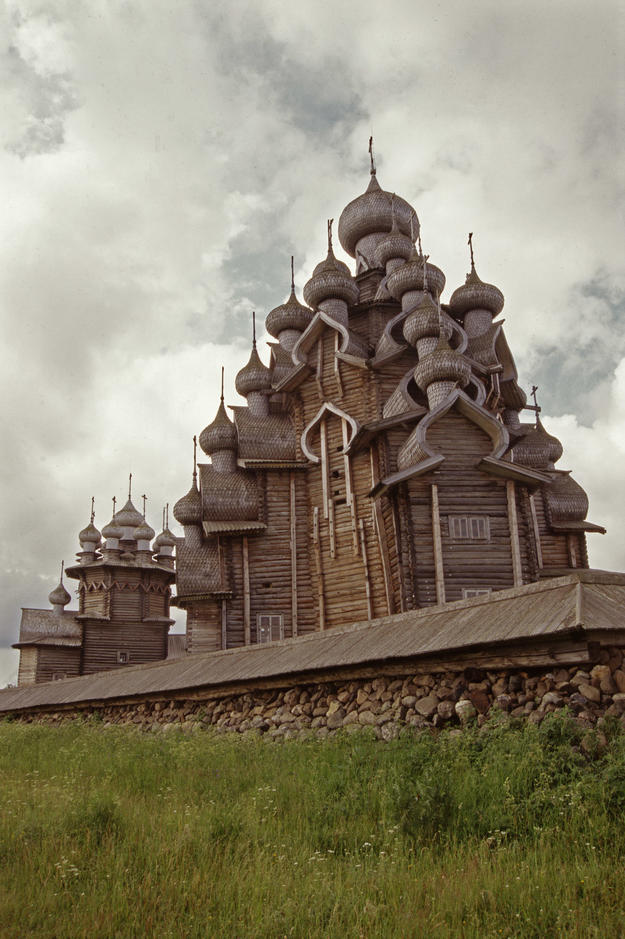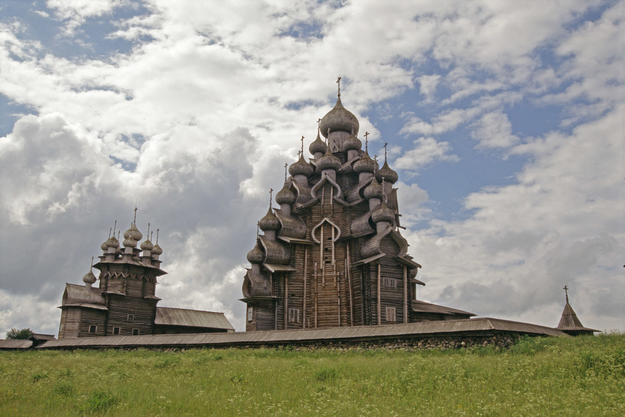Kizhi Pogost
1996 World Monuments Watch
Remote religious enclosures like Kizhi Pogost—pogost means enclosure—were established in the seventeenth century to serve communities of sparsely populated regions. Located on one of the many hundreds of islands on tranquil Lake Onega in the northern region of Karelia, Kizhi Pogost contains two spectacular wooden churches dating from the eighteenth century and a bell tower built in the nineteenth century. Tone of the churches, the Church of the Transfiguration, built in 1714, is an ascending composition of 22 cupolas rising from an octagonal ground plan with cross arms reaching the height of a ten-story building. The domes are supported on slender drums and bochka vaults, and covered with narrow, diamond-shaped aspen shingles, which have acquired a silver hue with the passage of time. The church is all wood, integral to Russian architecture, but the remarkable longevity of wooden architecture depends on the periodic replacement of decaying timber elements. Thanks to regular repairs, the Church of the Transfiguration survived into the twentieth century, but ceased to function as a religious site in the 1930s. In spite of a restoration effort following World War II, a steel scaffold had to be erected in its interior to protect the building from collapse. The building was closed to visitors in 1982, resulting in minimal maintenance, further contributing to the potential loss of the historic structure.
Due to its uncertain future and ever more precarious condition, Kizhi Pogost was included on the 1996 World Monuments Watch. In 1996, we partnered with the Norwegian Institute for Cultural Heritage Research and helped local authorities complete some of the most urgent repairs recommended by the International Council on Monuments and Sites and Russian heritage professionals following a survey after it became a UNESCO World Heritage site in 1990. We supplied environmental monitoring equipment for the church and for the pieces of the iconostasis, a screen bearing icons, of the church, which had been dismantled and removed to storage in the 1980s. We also helped improve the storage conditions of these artifacts by equipping a new storeroom on Kizhi Island. In addition, a water cannon fire-fighting system was expanded to cover the entire enclosure. Russian conservation architects and engineers completed a restoration plan, which adheres to the principle of restoring the monument without disassembly. Since then, UNESCO has closely monitored the site.
The Church of the Transfiguration at Kizhi is an iconic monument. Since the middle of the twentieth century, Kizhi Island has been the site of an open-air museum of historic buildings. Although the buildings within Kizhi Pogost remain standing on their original sites, many more historic wooden buildings have been moved to the island. For this spectacular collection, which showcases the mastery of wood construction by Russian craftsmen, the open-air museum attracts large numbers of visitors every year.




